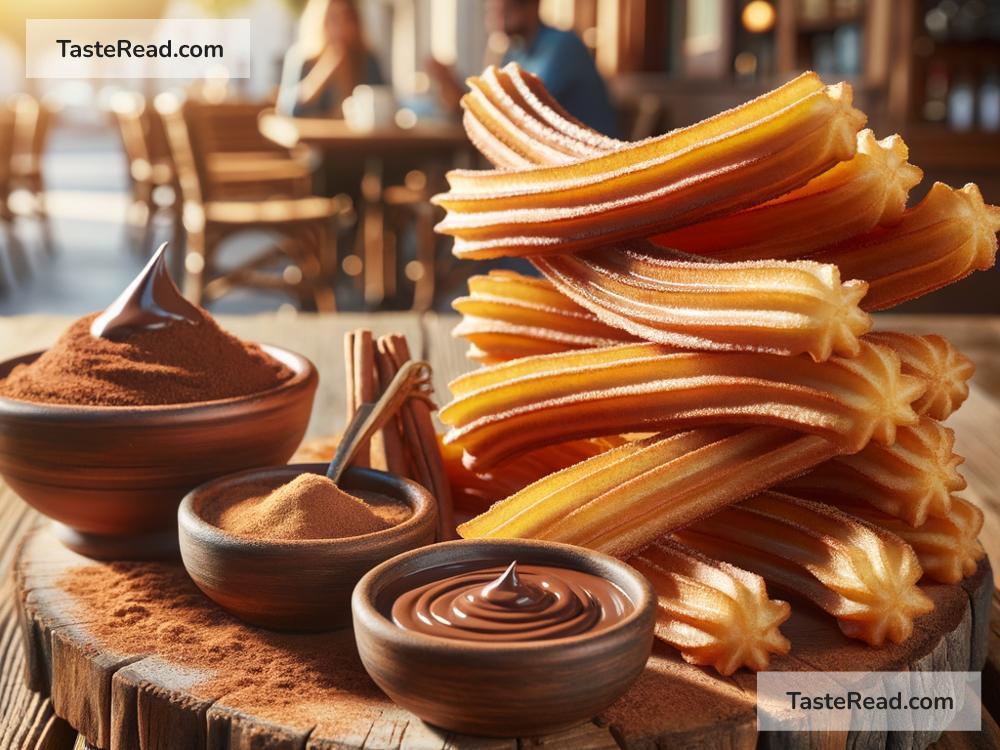The Development of the Spanish Churros: A Delicious Journey Through Time
Churros are one of Spain’s most famous and loved foods. These crispy, doughy treats are enjoyed at breakfast, snack time, or even late at night after a party. You can dip them in thick, creamy chocolate or coat them in sugar and cinnamon. But have you ever wondered about the history behind churros? Where did they come from, and how did they become a Spanish favorite? To answer these questions, let’s take a closer look at the sweet story of churros.
The Origins: A Journey Across Cultures
The exact origins of churros are not entirely clear, but many historians believe their story begins in ancient China. Over 1,000 years ago, people in China were making a fried dough dish called youtiao. This savory snack was long and golden, much like a churro, but it was salty, not sweet. Portuguese explorers who traveled to China likely tasted youtiao and decided to bring the idea back to Europe.
When the Portuguese returned, they made their own version of the fried dough. Unlike the Chinese version, they made it sweeter, adapting it to European tastes. The Spanish then took this recipe and gave it their own unique twist. They piped the dough into long, star-shaped strips using a special nozzle, called a churrera. This new shape was easier to fry evenly and gave churros their distinct ridges. And so, churros were born—or at least the version we see today!
Why Are They Called “Churros”?
The name “churros” might come from Spanish shepherds. Sheep called “churra” were common in Spain, and their horns looked very similar to the shape of churros. Shepherds living in the countryside often didn’t have access to bakeries, so they made homemade dough and fried it over an open fire. This simple treat became their go-to snack, and the name likely stuck.
Churros Spread Across Spain
Once churros arrived in Spain, their popularity grew quickly. Locals loved their simplicity and versatility. Unlike bread, which took hours to bake, churros could be made in minutes. They became a staple food, especially in rural areas and for people who didn’t have access to expensive ingredients.
In time, churros became a beloved street food in cities. Sellers began frying churros in big batches and selling them piping hot to hungry passersby. These fried treats were cheap, delicious, and easy to eat on the go. Churros quickly became part of Spanish culture, enjoyed by people of all ages.
The Perfect Pair: Churros and Chocolate
One of the most famous ways to eat churros is with hot chocolate. But Spanish hot chocolate is not like the thin, watery chocolate drinks you might find elsewhere. It’s thick, rich, and creamy—almost like a pudding. Dunking a warm, crispy churro into a steaming cup of chocolate creates a perfect balance of textures and flavors.
Spain’s love for chocolate comes from its history of colonization in the Americas. In the 1500s, Spanish explorers brought cocoa beans from the Aztec Empire back to Europe, and the Spanish quickly developed a taste for chocolate. Pairing chocolate with churros was inevitable, and today, you can find shops all over Spain—called churrerías—where people gather to enjoy this tasty combination.
Churros Around the World
As Spain shared its culture and food with other countries, churros traveled far and wide. In Latin America, for example, churros became incredibly popular. Many countries added their own unique twists to the recipe. In Mexico, churros are often rolled in cinnamon sugar and served with caramel or dulce de leche. In Argentina, they are stuffed with sweet fillings like chocolate or jam. Each country has adapted churros to suit its own tastes and traditions, proving that this humble snack is loved by people everywhere.
In the United States and Canada, churros are often found at amusement parks, fairs, and sports stadiums. They’ve become a fun treat associated with good times and celebrations. Churros can also be found in many other countries, from the Philippines to Morocco, showing how food connects people across cultures.
Modern-Day Churros
Today, churros have come a long way from their humble beginnings. In Spain, they remain deeply traditional but have also evolved with modern tastes. Creative chefs now experiment with churro recipes, adding new flavors like matcha, Nutella, or even savory seasonings like cheese and herbs.
Social media has also played a big role in churros’ modern popularity. Images of colorful, stuffed, or heart-shaped churros are frequently shared online, inspiring people around the world to try making them at home. Despite all these modern twists, the basics remain the same: fried dough, crispy on the outside, soft on the inside, and always delicious.
The Sweet Legacy of Churros
The development of churros is a reminder of how food travels, changes, and brings people together. From Chinese youtiao to Portuguese fried dough, and from Spanish shepherds to bustling churrerías, churros have crossed continents and generations to become a global favorite.
So, the next time you bite into a churro, remember its long and flavorful journey. Whether dipped in chocolate, rolled in sugar, or stuffed with caramel, churros are more than just a snack—they’re a delicious piece of history. Enjoy every bite!


